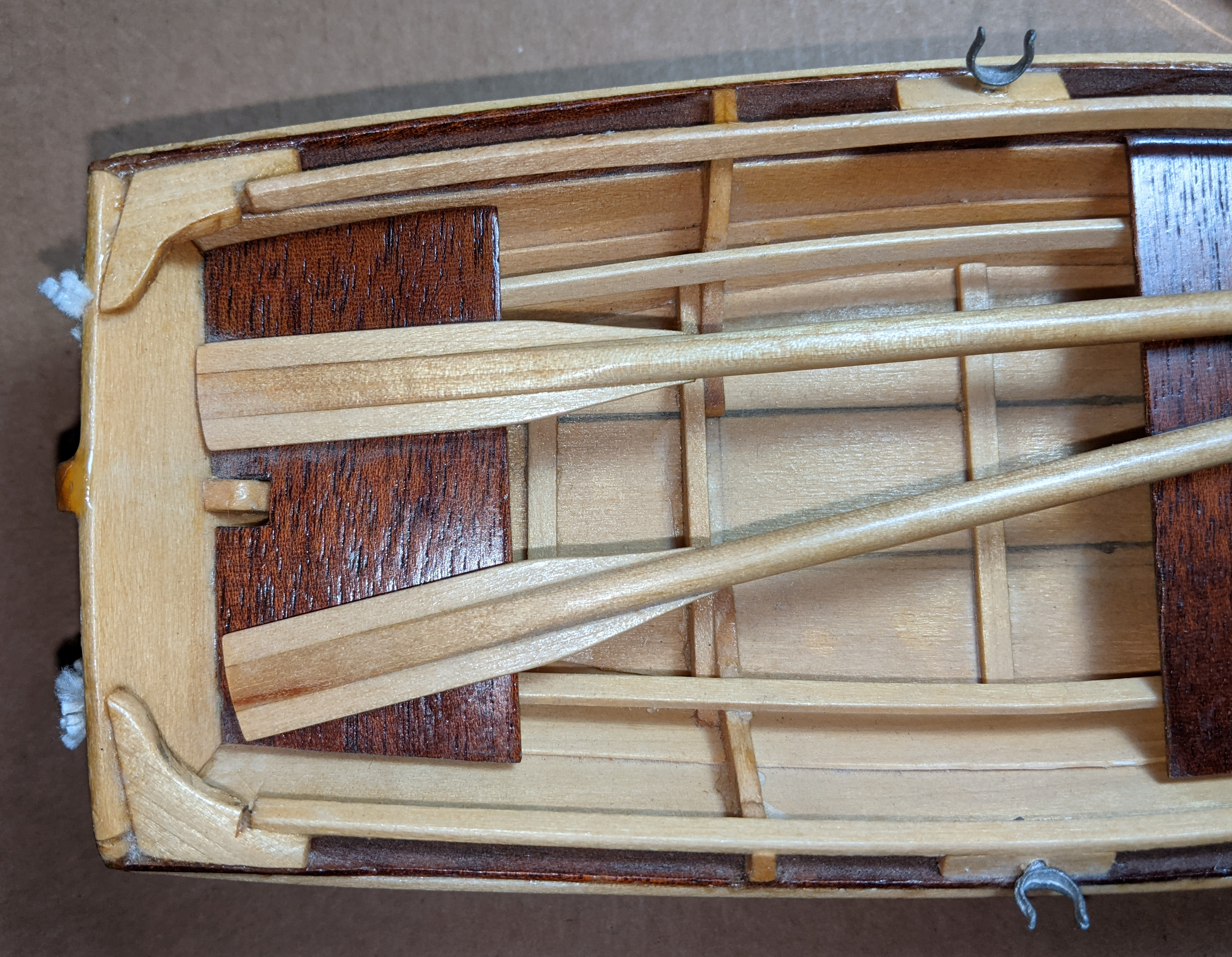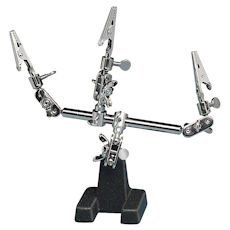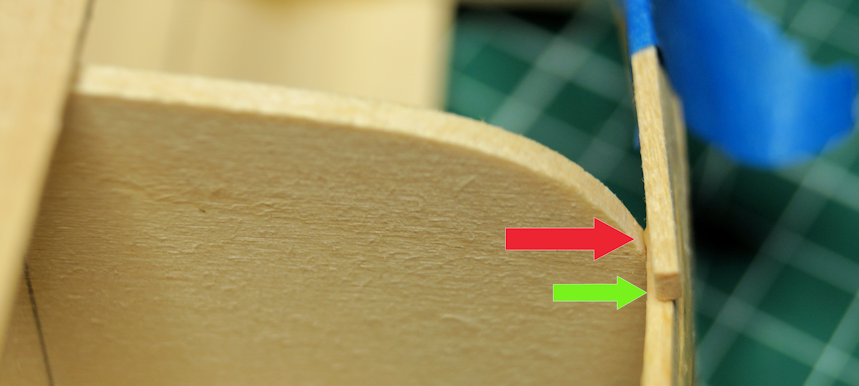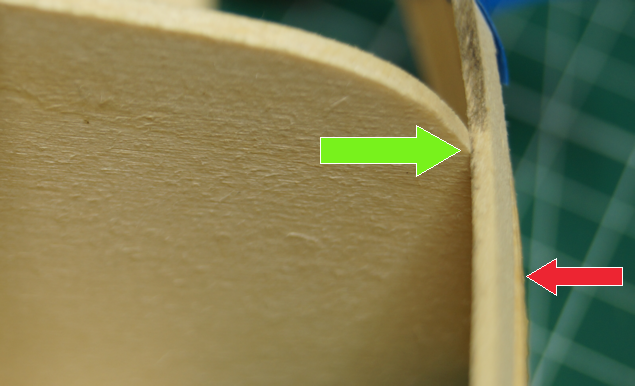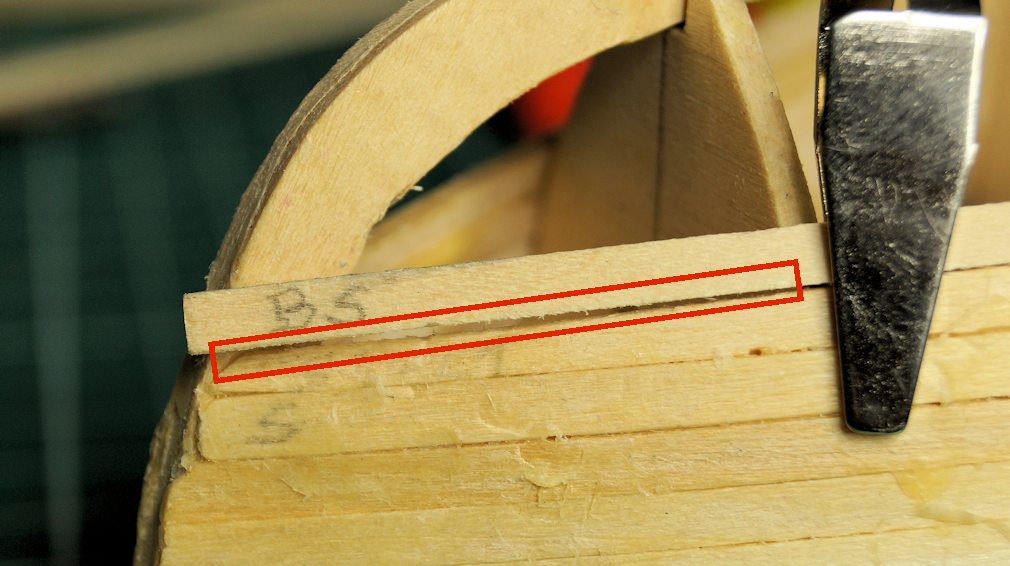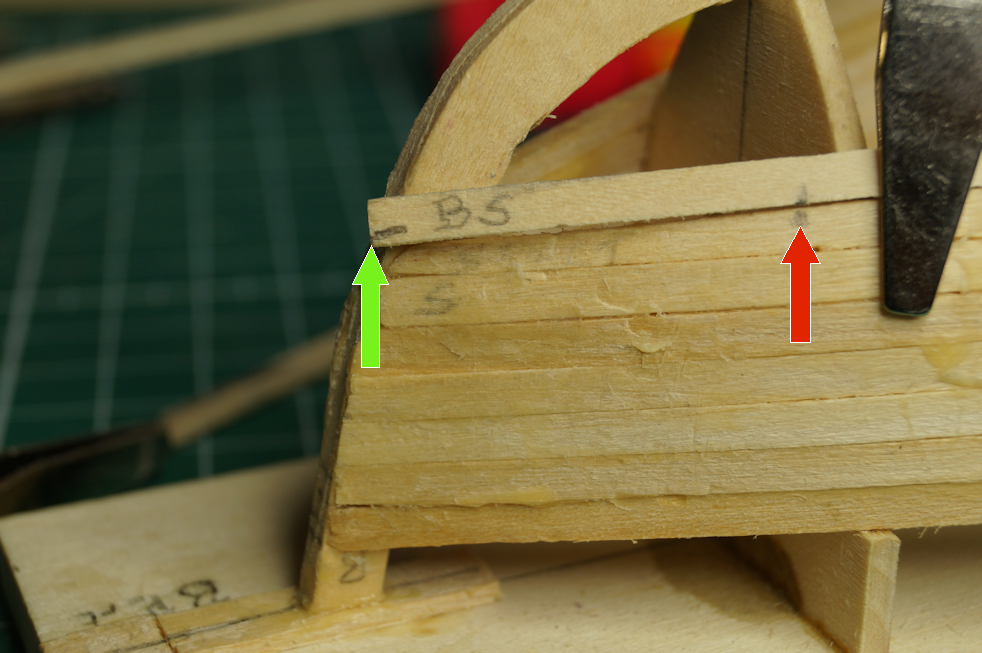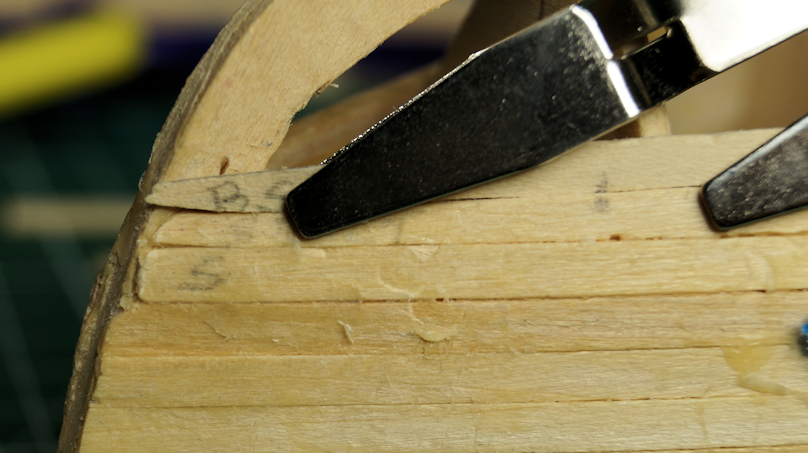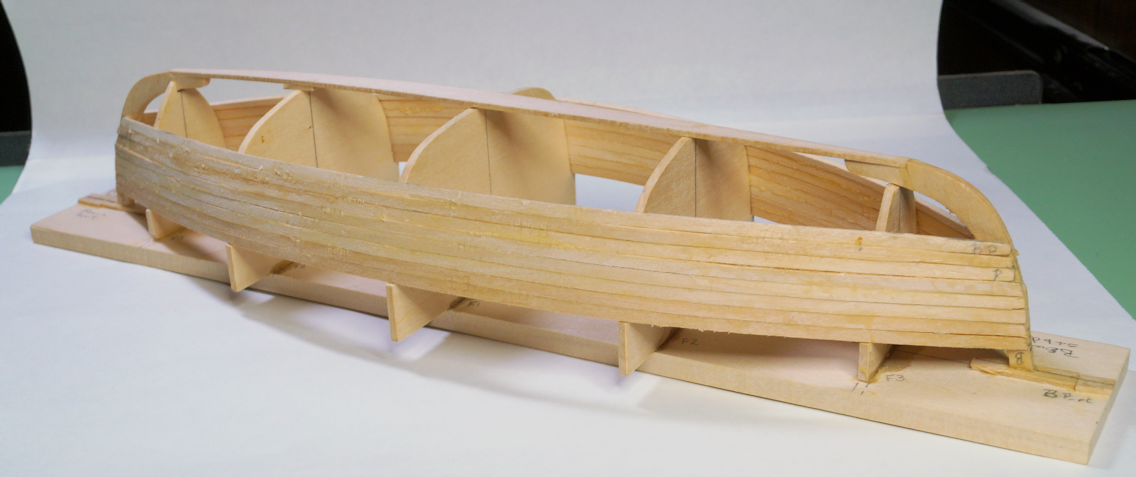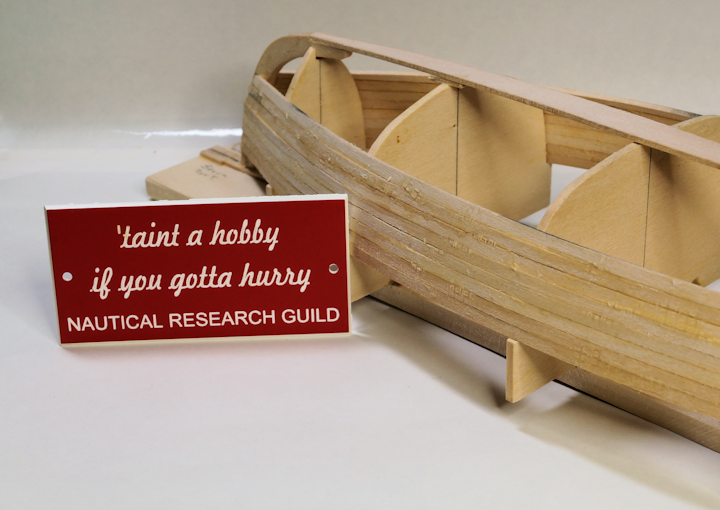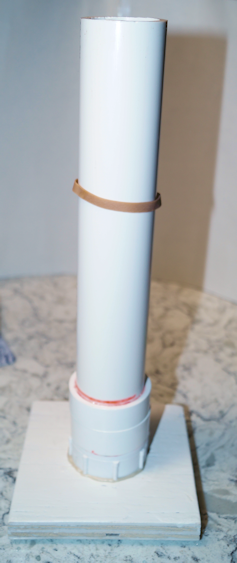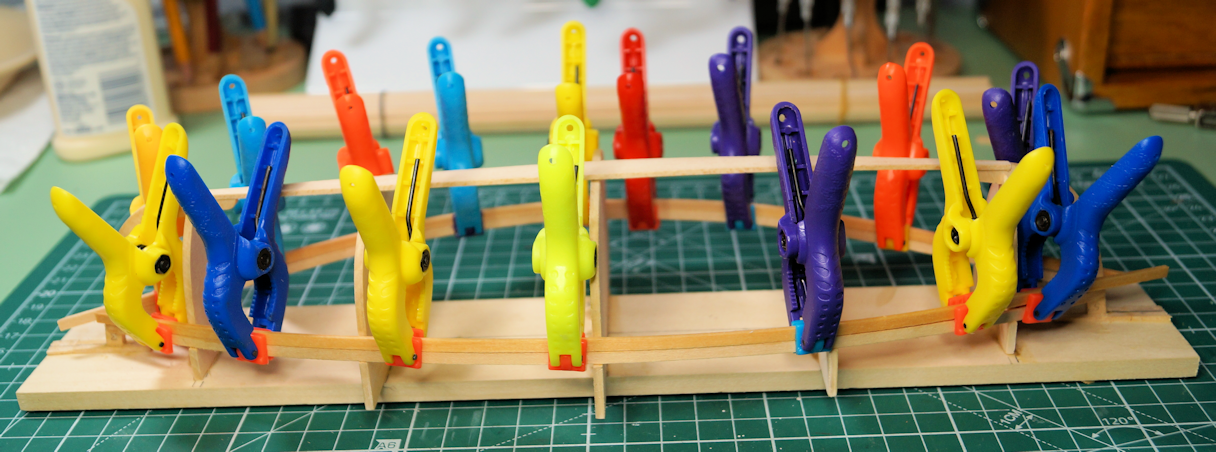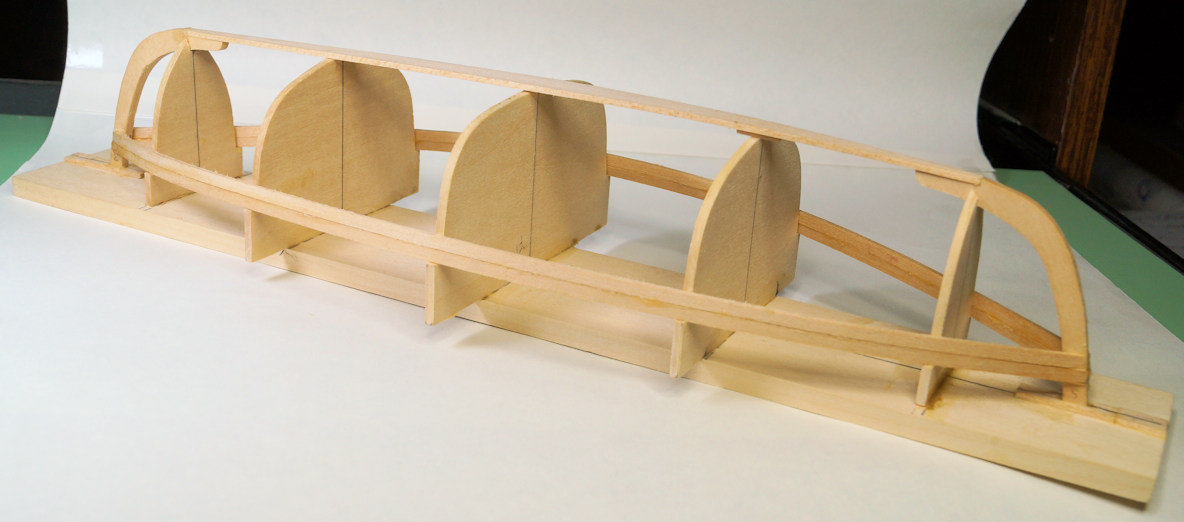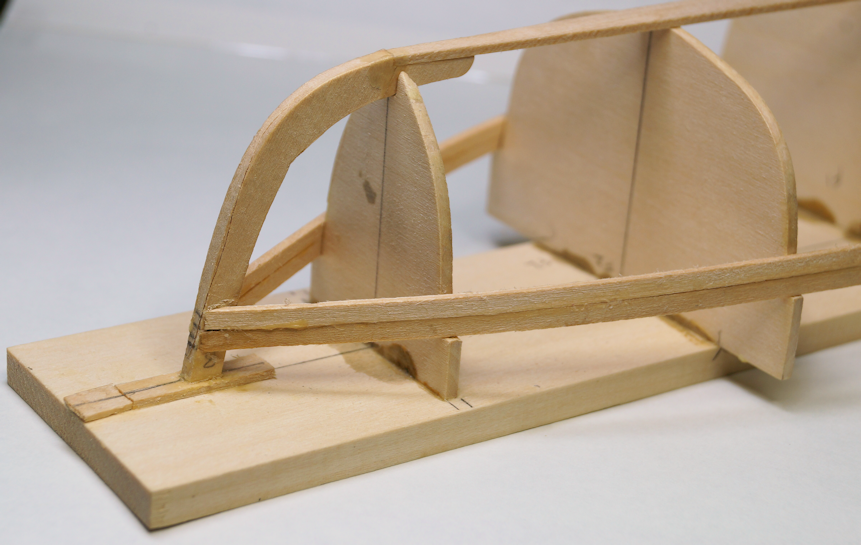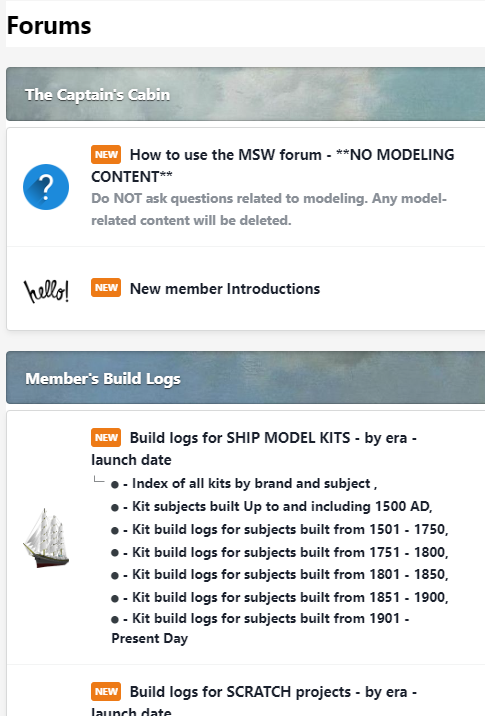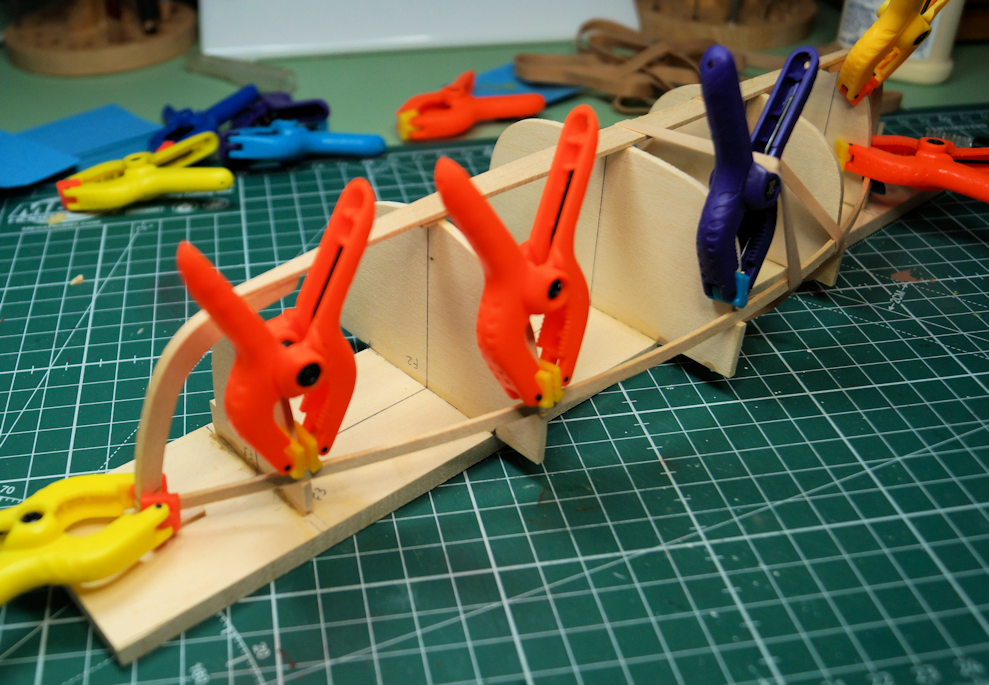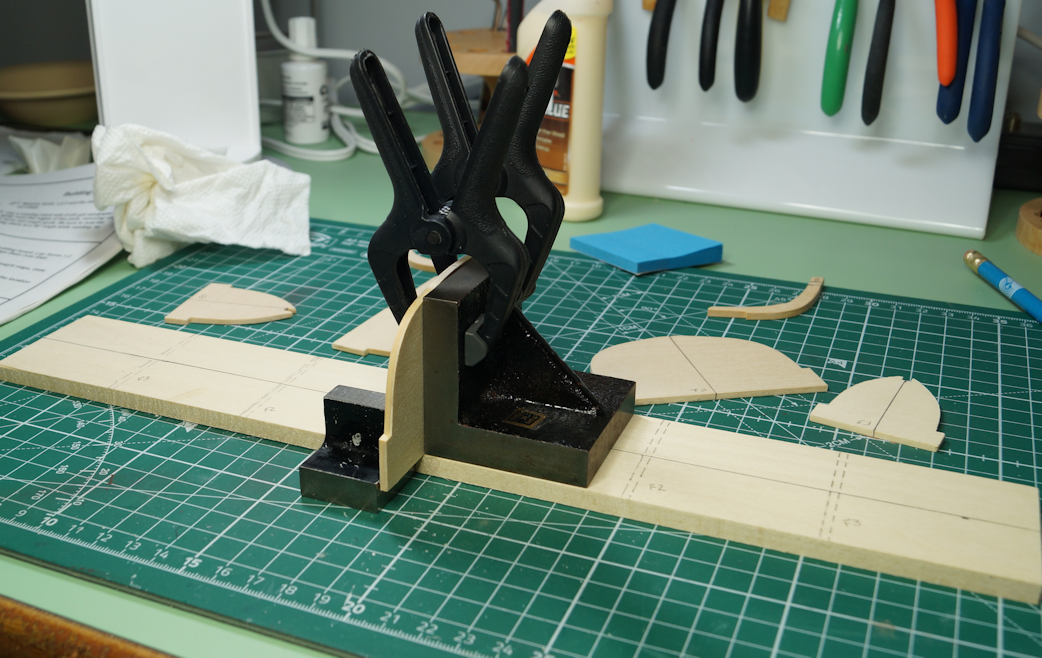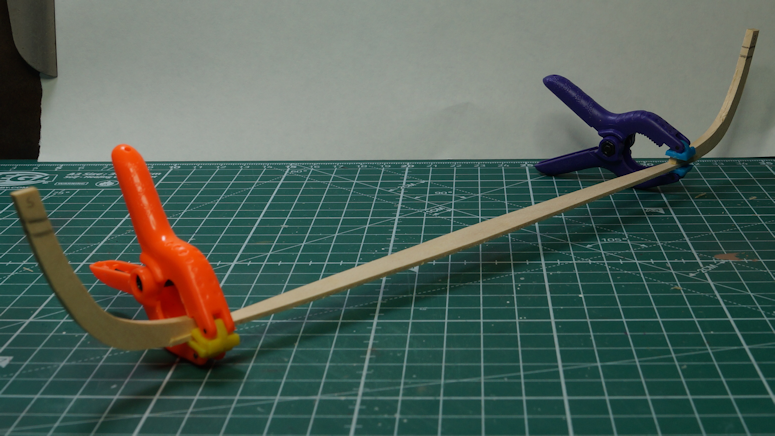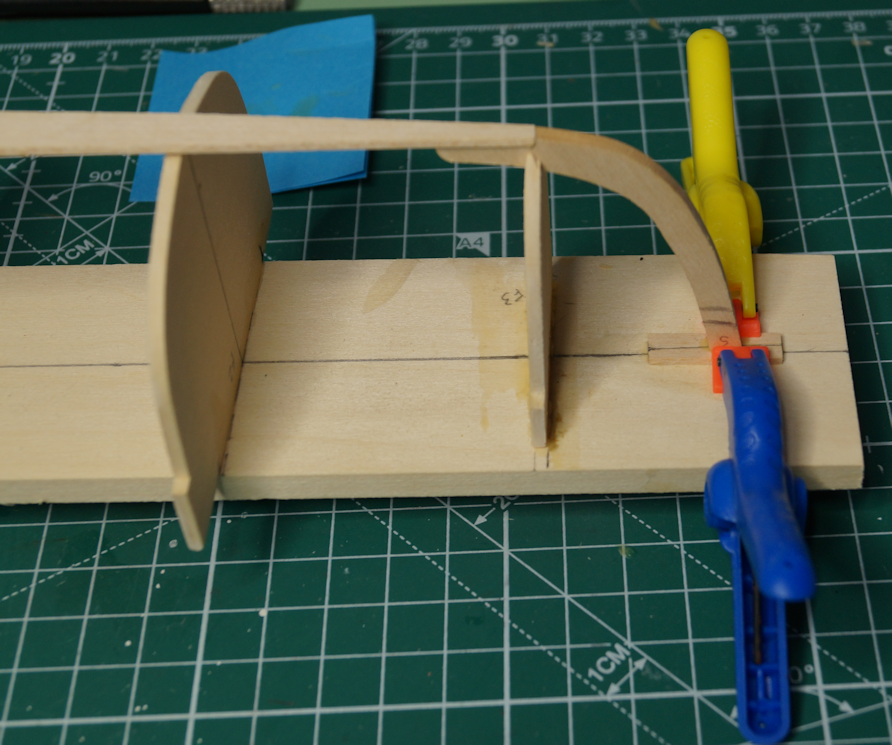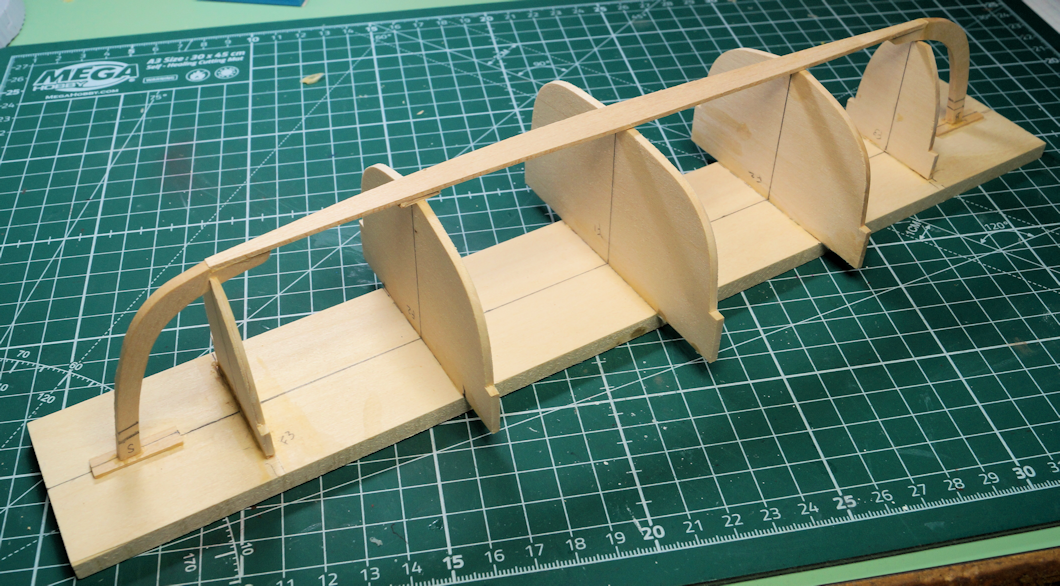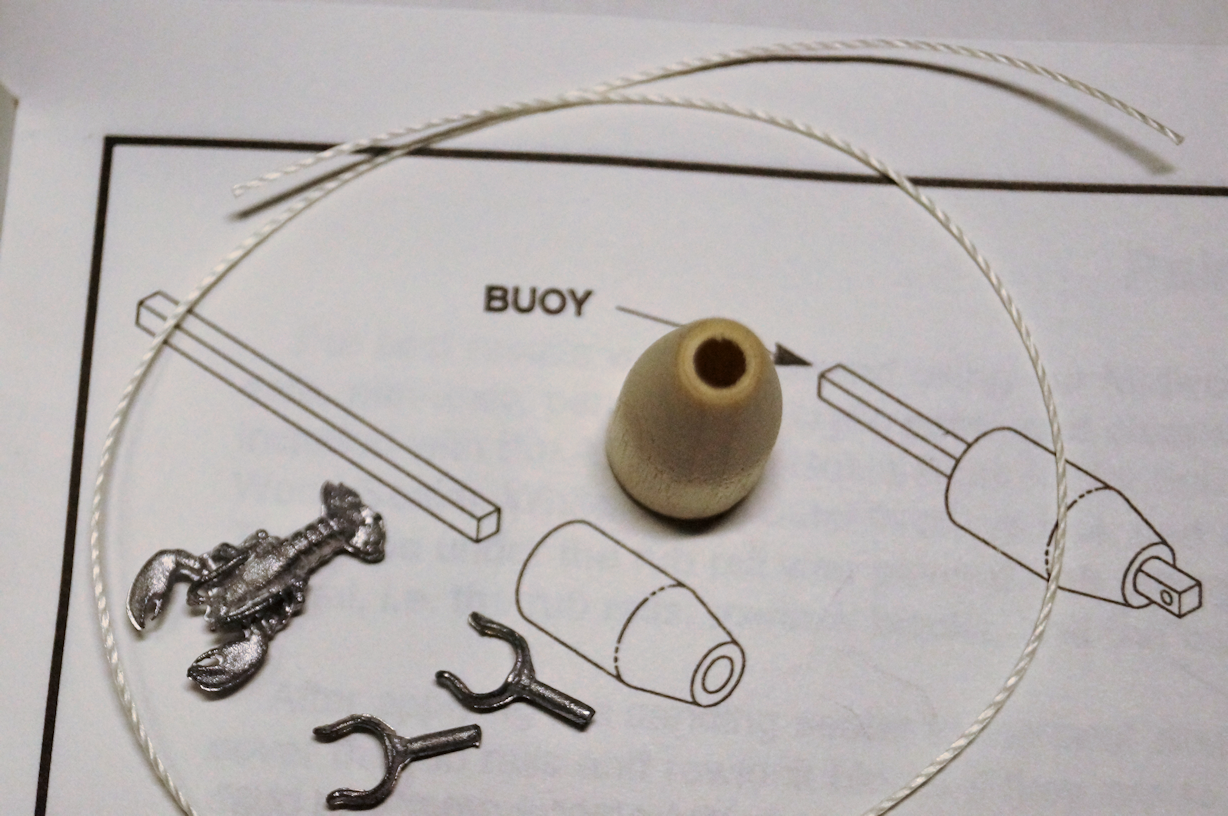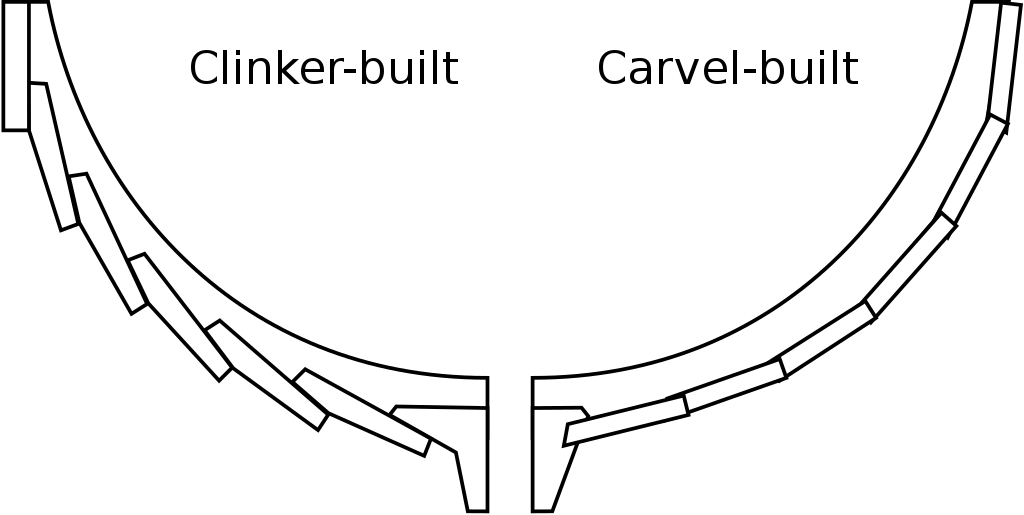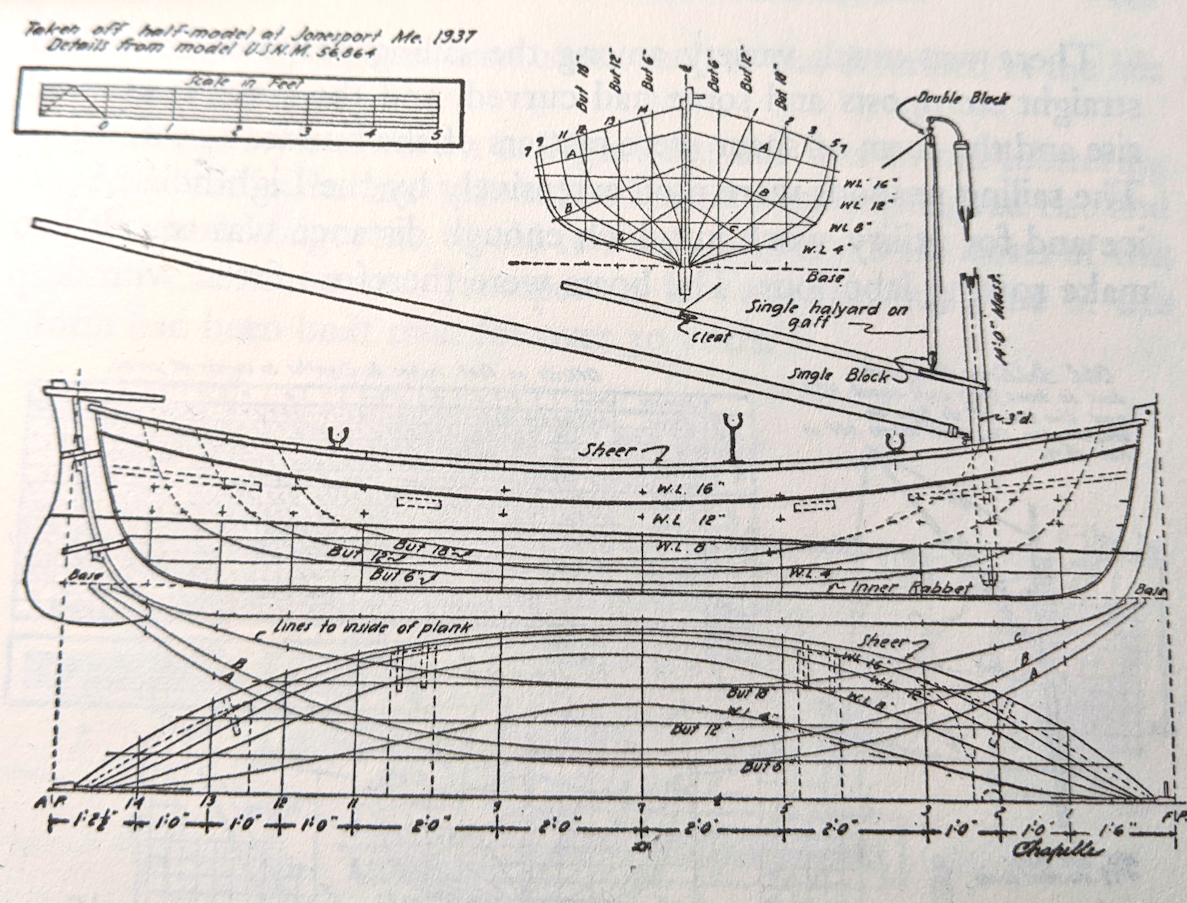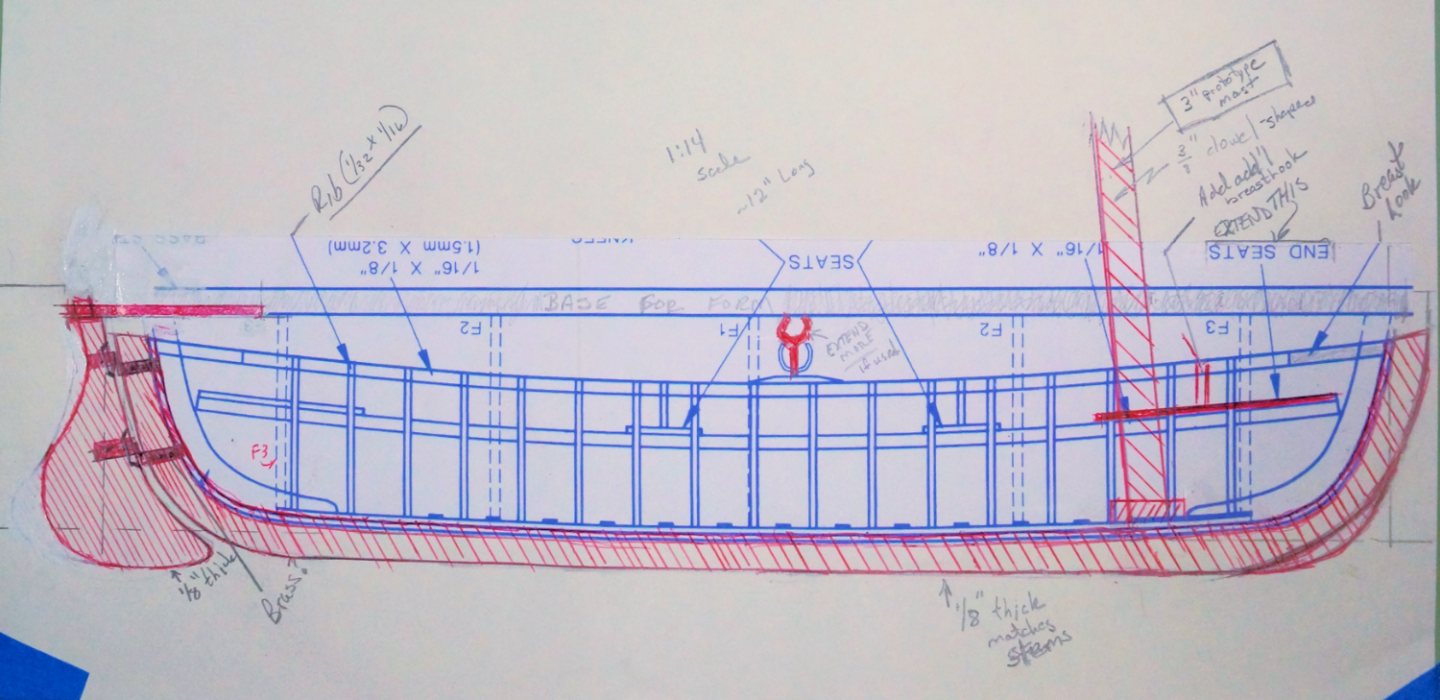-
Posts
907 -
Joined
-
Last visited
Content Type
Profiles
Forums
Gallery
Events
Everything posted by robert952
-
I am giving one of these boat models to my Dad for Father's Day. I pointed out this site so he can seek answers to questions as he progresses. IMO I find details like in this log goes a long way to answering questions for people just starting into the hobby or (like me) just looking for verification of what we are doing. Keep up the nice work. I'm adding this log to my 'watch list.' I'm looking forward to watching the progress.
- 62 replies
-
- First Build
- Grand Banks Dory
-
(and 2 more)
Tagged with:
-

Helping hands troubles
robert952 replied to VitusBering's topic in Modeling tools and Workshop Equipment
After posting, I reread the other entries. I can see an issue as pointed out that a bit of pressure could shift the 'target'. I find the 'ball and joint' like this item difficult t o use. For some reason I can't get the ball joint tight enough to stay in place and have similar problems to what's described. Hence I use the 'quad hand' approach. -

Helping hands troubles
robert952 replied to VitusBering's topic in Modeling tools and Workshop Equipment
Ah... I see now. Here's my video and 'solution'. As you can see, if it put a sharp bend to the arm it springs back. But a more gentle curve stays in place. Again, I am not sure it answers your question. But I could at least duplicate your video. I guess I never really did a sharp bend. I do note (now that you piqued my curiosity) if I bend the long arms back against a curve - like an S - the spring back is more pronounced. Again, I guess I never used these much that way. Hope this helps. BTW - a word of thanks. I have never loaded a vid to YouTube. I knew from what people said it was not hard. However, I had just never done it before. I guess now I can add 'Youtuber' to my CV. 😎 -

Helping hands troubles
robert952 replied to VitusBering's topic in Modeling tools and Workshop Equipment
Not that it helps you, however, the I have two. Neither one has any spring back on the arms. One is from Quad Hands (with magnets). The other I have has the arms bolted from the underside in the corners of the plate. I got the second one as a gift and do not know which brand it is. There's no identifier on the second one. It's likely from KOTTO as I had it on my Amazon wish list. All the arms on both appear identical, move smoothly and have no spring back (or a very tiny amount). They hold in position once set. As I said, I don't have the problem you have. I would be one who gives this a 5 star rating. As I say, I know this doesn't help your situation. -
Don't be shy about posting pictures. You might want to post a second log for the GH2. I am enjoying watching the build of GH1 and would follow GH2. The ship has a spot in my heart. I actually made the newbie mistake of starting on a Golden Hinde kit (Mamoli kit) as my first adventure into this hobby. It was way to advanced for me at that time. That attempt is stashed away in a very unfinished state. I'm not not sure if or when I might get back to that and see if it's salvageable. (I may just salvage the material from it.)
-
For a few planks more. Sounds like a 'spaghetti western.' Maybe because I had spaghetti for dinner tonight or the fact I recently watched an old Clint Eastwood movie. I hope that this build log will provide input and insight to those who may be researching this model and model building in general. Towards that end, I will add a bit of detail on my method that might be useful. So, settle in as I become verbose (again). Step 19 of the 'construction manual' says to repeat steps 15 - 18 (adding planks to the boat). Step 20 says: "Use care to align the planks so that there is not a step between adjacent planks. Small imperfections will be sanded out later." Though I am not quite there yet, step 21 says to trim planks to fit as you work towards the 'bottom of the boat'. (Seems like the use of a nautical term would be appropriate. I'll call it the keel.) The instructions do not provide detail on how to accomplish this. Here's how I accomplish this goal...at least to some degree. Someone reading this log may not know the why and how to get the boards to lay properly. The reason for the why can be seen half-way down my first post in this log at the drawings showing lapstrake vs carvel planking. In the drawing, you can see how the 'artist' used rectangles to show the planks for the carvel method. To match the lines of the hull, you will need to angle planks to insure a proper fit. Hopefully, this image shows another view to the situation. Note that the green arrow points to a plank sitting on the flat surface of the previously assembled plank and the red arrow shows the angle the plank needs to lay properly against the bulkhead. (I just taped the plank in place for the photograph.) The solution is to bevel the plank. In this photo, as it is oriented, the bottom edge of the plank gets beveled. Per books covering planking of models, the method indicates you bevel only one edge of the plank. Beveling only one edge means you have a flat surface to assemble the next (beveled) plank to maximize surface faces for your glue to hold. (As a note: this model is planked while upside down. The instructions point out their reference to top and bottom refer to the boat as it floats upright. In the photos, I wanted to refer to the orientation in the images. I just feel it's a bit awkward to point at a 'lower edge' and call it the 'upper edge.' However, when the model is complete, the top edges of the planks are the beveled edges.) Prior to shaping, I scraped and sanded the edge of the plank. I am finding the process to be more art than science. You want the bevel to fit against the edge of the plank with the side against the bulkhead (or frame - depending on the actual method of the build). I take it slow to match the bevel at each station. I eventually end up with a fit that I am happy with and seems to do the job. I 'dry bend' the board into it's approximate shape during this process. I learned you have a hard time scraping and sanding a curved piece of wood. After I have the bevel, I wet the board; bend set in in place as seen below; secure it on the bulkheads; and wait for the plank to dry. The plank is not glued into place at this point. The green arrow shows the fit after the bevel is done. The red arrow shows a bit of the lower plank. Part of that 'step' gets corrected in my next steps and when I glue the plank in place. (A small bit of force fit is required sometimes to make the curve relatively smooth. As a plank curves along the bulkheads, the ends start overlapping. You can see this situation in the photo below (I hope). By the way, the BS is my marking for Bow Starboard. I work on two planks at a time (port and starboard) and this helps me keep straight which board I have in my hand and which end goes where. The bevel and taper becomes customized for each plank. Reference material illustrates the bevel with a sketch such as below. This sketch is from Planking Techniques for Model Ship Builders by Donald Dressel (Pg. 51) I find the method isn't difficult. You mark the points where one plank starts overlapping (red arrow below) and the point that allows the plank to fit properly (green arrow). You remove the wood between the two marks. I extend the starting mark onto the plank below to be sure I align the plank properly when I glue it. One key point here: USE A SHARP BLADE. You cut a mere sliver of wood. I thought I had one more cut left on the blade I was using. As you can see below, I really didn't. Oh, well. We all make mistakes. And it's nothing that a little (or maybe a lot) of wood filler can't fix. At this point I apply glue. I am using carpenter's wood glue. All of this leads me to the efforts of my work on the model. I added six more planks to each side of the boat since my last post. I leave with a bit of levity. I tutor a student; a scary thought that I am forming the mind of a teen. (It's algebra, so I doubt I will warp their mind too much.) Since my model table sits across from my main desk, the student sees my work in progress. I suspect I am like many: I work on a model when time and mood allows. The student made a comment about how slow the progress seems to be. So, I dug around and found the small laminated item I got when I joined the NRG to show to my student. I took this photo since I had the model set up for photography. I've always liked the sentiment. I may get a large print of it to hang over my work station. Since this process will continue for the rest of the planks, I may not post the next entry until I've completed the planking. I hope you found this entry interesting, educational, and at least a bit enjoyable.
- 44 replies
-
- maine peapod
- peapod
-
(and 4 more)
Tagged with:
-
Re: Name of knot. That's called a wonhelova. 😁 Not sure the language that's translated from. It's the knot I use most often. Nice looking models. I only hope my 'first time sail' works and looks this good. You've got a good start on a nice little fleet. Looking forward to following your next build.
- 23 replies
-
- Norwegian Sailing Pram
- Model Shipways
-
(and 1 more)
Tagged with:
-

bulkhead bevels
robert952 replied to Woodshipguy's topic in Building, Framing, Planking and plating a ships hull and deck
It may be of use to know which model and instruction manual. Maybe someone has assembled the model kit and can give an experienced answer. Typically, you bevel each bulkhead to allow planking to sit flush on the bevels and give the proper shape of the ship. Depending on the model kit the bevel is somehow marked per bulkhead indicating a base line for how much to remove on each bulkhead. Even after that, you may need to fine tune the shape. There's several methods that others may be able to help with that process. Hope this helps some. Again, details on which model kit you are building can be helpful to giving more specific details for your build. -
Very nice looking model. Congrats on a job well done.
- 72 replies
-
- Norwegian Sailing Pram
- Model Shipways
-
(and 1 more)
Tagged with:
-
First two planks assembled. As I said above, I decided to shape the planks around the bulkheads rather than use 'brute force.' The instructions do not discuss any method for soaking the planks before bending. They show the planks pressed into position. I think shaping the wood reduces or even eliminate stress where the planks meet the stem posts. I read various articles and threads on plank bending here (and reviewed a couple of books in my library). Based on what I read, I built a tube to soak the planks. I bought some PVC plumbing parts. My local Home Depot did not have the end caps I wanted, so I used a 'cleanout' connector on a precut piece of PVC pipe. I think this was, as Bob Ross would say, a "happy accident". I used a piece of scrap plywood. I made a square hole for the cleanout nut. I epoxied the assembled tube into the plywood to keep the whole thing stable when in use. A bit of paint to 'dress it up a bit' though the intent is utility over aesthetics. While not as elegant as some of the described pipes for soaking, my tube works well enough. I use the rubber band to hold a paper towel to keep the wood from floating up in the tube. (AND, the tube didn't leak...a big plus over my usual work with plumbing.) While a lot of the MSW threads indicates 10-20 minutes of soaking time, I found I didn't need to soak them that long. I need only a smooth curve, not any hard bends to the wood. After about 5 - 6 minutes of soaking, I could place the wood around the bulkheads and hold them in place while they dried. Here's a shot of the wet wood (slight discoloration seen below) of the second plank being held in place. When the wood dried, the shape held with very little 'force fitting.' I am using wood glue over CA or PVA. As with a lot of discussions, the choice is as much a personal choice as anything. As mentioned in my previous post, I coated the edges of the bulkheads with beeswax. Even with the 'form fit' of the wood pieces, I made sure to secure the planks to each other. Is it possible to use too many clamps? I had some left over and was just wondering. I followed the instruction manual by first attaching one end of the plank to one stem post. I then glued the edges of the planks, clamping them into position as I went. I quickly finished the plank by gluing it to the other stem post. The glue on the the starting end had almost set. I made sure the glue had set and then did the other side of the boat. Here's a couple of images of the first two planks assembled with the glue dry and set. So far, the boards are not sticking to the bulkheads. Hopefully a combination of my being as neat as possible with the glue and using the beeswax. I will have to take care to cut the stems since I modified the strong back a bit. However, I think the final assembled boat will easily come off of the strong back. The next couple of planks will not need much bevel for a good fit. However, as the planks go around to the bilge, the edges have to be beveled for a tight fit. The instructions do not indicate this as part of the process. They indicate to align the planks "so that there is not a step between the adjacent planks." Beveling the planks should make a better fit. Hopefully, beveling will reduce the number of gaps that will need filling.
- 44 replies
-
- maine peapod
- peapod
-
(and 4 more)
Tagged with:
-
Climbing aboard to watch this build. Welcome to MSW. Looking good so far.
- 39 replies
-
- Lowell Grand Banks Dory
- Model Shipways
-
(and 1 more)
Tagged with:
-
This is why I like reading these build logs. I had forgotten I had one one of these flexible curves. I looked around and can't find it. So, it may be lost. I can see this as a useful tool for simple curves like on a small boat. Thanks for suggesting this.
- 72 replies
-
- Norwegian Sailing Pram
- Model Shipways
-
(and 1 more)
Tagged with:
-
Not an update per se but something I ran across. I stumbled across @Dan Vadas thread (LINK) and added 'Small' to my topic title. I like the idea. (Should small be a tag, too?)
- 44 replies
-
- maine peapod
- peapod
-
(and 4 more)
Tagged with:
-
Short answer: Start a new topic in the appropriate 'build logs' sub-forum: View from MSW home page: The title should be in the format of "Name of ship/boat - your user name - manufacturer - scale. Here's the link that may help. Link. Also add tags to help others searching for specific models that have been built or that's a work in process. Terms like the ship's name and maybe manufacturer. Think in terms you would use if you were looking for a particular ship or subject. Hope this helps. Welcome to MSW.
-
Test Fitting First Plank. I did a test fit of the first plank. From that I found that I want to actually bend the planks into shape. So, it's off to review plank bending techniques. It's not a lot of bend required. I just feel that if the planks fit there's less stress on the shape of the boat at the stem posts. (It's still a double-ender so I haven't determined a bow and stem. That will come as I add the rudder.) A couple of build logs pointed out an issue with the sides of the boat squeezing inward once the boat was removed from the strong back. I will keep in mind that the center bulkhead may have to remain in place. Again, reading some build logs and Dynamite Payson's Boat Modeling with Dynamite Payson, I read suggestions to use bee's wax on the bulkheads' edges to help keep glue off the edges of the bulkheads. That's been applied at this point also.
- 44 replies
-
- maine peapod
- peapod
-
(and 4 more)
Tagged with:
-
Building the strong back. The boat is built 'upside down' with on a strong back. So, the first steps build this assembly. In my 'research' information, I did not mention part of the research covered build logs here at MSW (and other places). Reading those logs gave me some things to be aware of that I could avoid as well as useful tips and hints. One key point was to be sure the bulkheads are squared and perpendicular. The stem posts and floor board to make what I will call the 'keel frame.' At this point I hadn't marked the ribs and floor boards locations. That's the next step. I had a problem getting the 'keel frame' to attach to the mounting board of the strong back. When I forced the fit I managed to break one of the bulkheads off. So, after repairing that, I went back to review the matter. As I analyzed the problem, I determined two things. The keel frame did not sit on the bulkheads. The keel was bowed when I tried to glue the frame to the mounting board. Additionally, the drawing from Chapelle's book shows an almost flat keel line. So, I wanted to adjust for that. To fix the problem I cut some spacers to place under the bow and stern stem posts. That allows the bottom to be parallel to the ground. I did also have to do an adjustment to the frames to be sure it supported the keel frame as one vertical bulkhead didn't quite lay flat. That completed the strong back assembly. After this picture, I extended those pieces because I will be adding a 3/8" keel to the false keel which rests on the strong back assembly. This addition will allow the keel to extend above the sheer and may serve as a location to attach the rigging.
- 44 replies
-
- maine peapod
- peapod
-
(and 4 more)
Tagged with:
-
Nice job! Rigging looks great. As commented, great job at weathering.
- 31 replies
-
- Grand Banks Dory
- Bluejacket Shipcrafters
-
(and 1 more)
Tagged with:
-

Holding small parts for soldering
robert952 replied to BETAQDAVE's topic in Metal Work, Soldering and Metal Fittings
@druxy yep...there's five hands on this version. The one pictured has strong magnets (rare earth?) and you can place the flex arms anywhere on the plate. I have one of these and one with screw mounted arms in each corner from a similar company prodctu offering. (a similar but different company's product) has 6 holes - one in each corner and holes in center of the long side of the rectangle. The companies also sell arms separately. IMO well worth the money spent. -
Preface I’m about ready to start my next build. Ready as in: it’s on the work bench, research done, and building process outlined, at least mentally. I got into the habit with in my previous build of, well, doing a build log. I think I have now established a discipline to continue that process. While this boat could correctly go into different launch dates, I chose this sub-forum since the version I am building has a 1937 date on the plans (see below). For this log, I want to post some information prior to starting the actual work on the model. As I pondered the build, I did what I think all modelers do at some level: research. The unusual aspect comes from the subject of a workboat which from my perusal of threads isn't a typical research subject. This research pointed a direction to take for the build. I started with the “Construction Manual” (instruction sheet) which, I think, is where most modelers begin when building a kit. Kit information Speaking of kit, here’s my thoughts on the kit itself. I’ve had this kit in my stash for years. I decided it was a good reentry into a wood model as I previously built a Midwest Model’s kit (The Dinghy). Additionally, I think I can do more than just “follow the instructions.” I wanted to look at upping my game by modifying this kit and build. If all goes per plan, I will have added some ‘scratch build’ skills to my toolbox. The kit is a Skill Level 2: intended for the person having “some prior experience building wooden boats.” I find that an interesting turn of phrase since in all likelihood most of us haven’t built a wooden boat. Boat models, yes. But not actual boats. (I know there are a few exceptions out there of people who have built a boat or two.) The kit has the necessary components to build a nice-looking model using basic skills of “cutting, fitting, and shaping wood.” As a side note, Midwest Models at some point in time quit producing these models. I am not sure when. Maybe someone can add a date to the thread. Recently, Model Expo reintroduced the kits from Midwest Models, including this kit. It appears that they kept the kit in its original form with die-cut pieces and strips for planking. While other kits for beginners and novices exist, this kit provides a good introduction to wooden boat/ship modeling. For those who choose to build this model, I hope this build log will prove useful. The kit has basswood die-cut pieces, strip wood for planking, and some mahogany pieces for the oarlocks and rub rail. It also includes material for oars, oarlocks, a lobster trap and buoy (more on these when I assemble those parts), and even a model of a lobster in cast metal. The instructions are clear enough to follow. I would suggest that some areas of the construction steps need a bit of research around beveling and bending wood. Nothing major, but if you haven’t done it before, look up some ‘how to’ information for techniques. The instructions include a couple of tidbits of data that got me to thinking about the build and raised questions about the boat. Like many modelers, I researched the boat. What I discovered pointed out ways I could modify the model for this build. Here’s what the instruction sheet (and box cover) has for background on peapods, particularly as related to lobster fishing. Being a double-ender (pointed at both ends), the workboat fits a unique set of requirements for those fishing for (well, trapping) lobsters. The boat can be easily rowed in either direction. This workboat design makes it suited for working around rocky shorelines. People rowed the boat while standing and added sails for getting to and from their traps and for use as lighthouse tenders. You find these in use around New England. They showed up in the late 1870s through the 1930s when diesel powered became the predominant lobster fishing boat. The concept of having sails and rowing while standing suggested some potential areas for modifying the kit. Beyond the instruction sheet history, background, and additional research In case there are some who don’t know the details of the boat, here’s some information you may find useful and gave me an insight into building this model. I found more than one type of ‘peapod’ during my digging around the Internet. This article shows detailed variations of lines for peapods and has some charts evaluating their performance, WoodenBoat link: Gallery of Peapod lines) I found the information interesting, particularly the range in sizes (13 to 16 feet) for the length of these boats. This 14-foot scaled model fits within that range. Like so many workboats, the exact origin cannot be specifically pointed out with 100% certainty. Several sources do point to North Haven Island, Maine, and Penobscot Bay as the birthplace. That is pertinent to this build since, by using the lines in the above ‘gallery’, I found this model fits the North Haven (Whitmore) lines. For a bit more details on peapod history, I suggest this link: North Haven Maine Historical Society: Peapod. I found a lot of differences in the various sources describing peapods. For example, the design likely started as lapstrake, or clinker built, with the planks overlapping. At some point, the construction changed or included carvel; planks butting against each other. The image below comes from a Wikipedia article about Clinker Boat Building . No other attribution noted. I think it does a good job showing the difference in the styles. This model uses carvel build. This drawing of the carvel does show the general need to bevel the planks for a boat. The amount of work depends, of course, on the actual lines of a ship or boat. Another area of difference exists around the sailing rigs. These boats were often used as lighthouse tenders. Howard Chapelle’s American Small Sailing Craft (Pg. 217-222) points out that peapods had a gaff mainsail or spritsail with a few having a jib tacked stem. A more contemporary set up includes a single lug sail or as a lug rigged cat yawl. If you want to take your model making to a new scale; say 1:1, you might want to visit Chesapeake Light Craft and their Lighthouse Tender Peapod. Building this full scale versions gives the experience of actually building a boat and not just a model. (Or you could say you built a 1:1 scale model?) They also include some details about peapods and their choice in sails for their boat kit. Some peapods were rowed (while standing) out to the lobster grounds and then sailed home at the end of the workday. It seems that these boats were not altered much for this dual duty. The sails were stored while working traps and stepped for the trip home. I did find a reference that an oar was used as a rudder which eliminates the need to manhandle the rudder. (About that standing up and rowing, you’ll have to wait until step 56 of the manual.) If one intends to use the boats mainly as tenders or supply boats, having a keel and rudder makes sense. These additions make a boat easier to maneuver with wind power. Again, I referred to Chapelle’s book for details. The plans there showed examples where the false keel is extended. The keel in this book ranges from 3” to 5”. (In Boat Modeling with Dynamite Payson, he shows a sailing keel of about 10 inches in the version he uses as a reference.) While adding a centerboard keel could be an option, from what I found in my research, that option apparently did not get used often, if ever. What this means for my build. I went over these details to give some insight on my thought processes and explain the changes I will make to this build. I plan on adding a sail rig. To do so I need to settle on a plan and determine how to add the keel, rudder, and rigging. Using Chapelle’s book (pg. 219 Fig 83), this 1937 version from Jonesport, ME will be my main guide. Using the kit’s drawing (blue lines) and adding the keel and rudder (red lines) I came up with this as my model’s plan. This keel works out to be 5 inches on the prototype which, I think, is a good compromise in the range of keels in the various sources. I will have to refine parts of the drawing when the time comes like the final shape of the rudder and tiller. However, I feel this will work well for my goals. I do have a general plan in mind for working all these changes into the model. I will cover those details at the appropriate points in the build. But as a preview, a couple of other changes requires modification to the (now bow) seat that will help support the mast along with a mast step. I haven’t looked at all the details for a boom, gaff, the ‘iron crane’ that sits on top of the mast, and the rigging. I do have a good idea on what these will look like. For the sail, my plan is to add a silk span sail. I intend to have the sail furled. (Hopefully that will hide any ‘newbie’ mistakes as I have never scratch made a sail nor worked with silk span.) I will be reviewing Tom Lauria’s video “Making sails for Ship Models from Silkspan” (Link to Part 3) for guidance. And somewhere in my notes is a link that indicates a method to cut the sail to make the task easier to model a furled sail. For this method you don't make the whole sail. A part of the sail in the aft lower corner is cut off to simplify the furl. Ready to start the physical work. I hope you learned something from my efforts so far. After all, a big part of the hobby and these websites comes from sharing information we discover as we progress. While it may not be 100% historically accurate, the model should be a good representation of a Maine Peapod rigged for sailing.
- 44 replies
-
- maine peapod
- peapod
-
(and 4 more)
Tagged with:
About us
Modelshipworld - Advancing Ship Modeling through Research
SSL Secured
Your security is important for us so this Website is SSL-Secured
NRG Mailing Address
Nautical Research Guild
237 South Lincoln Street
Westmont IL, 60559-1917
Model Ship World ® and the MSW logo are Registered Trademarks, and belong to the Nautical Research Guild (United States Patent and Trademark Office: No. 6,929,264 & No. 6,929,274, registered Dec. 20, 2022)
Helpful Links
About the NRG
If you enjoy building ship models that are historically accurate as well as beautiful, then The Nautical Research Guild (NRG) is just right for you.
The Guild is a non-profit educational organization whose mission is to “Advance Ship Modeling Through Research”. We provide support to our members in their efforts to raise the quality of their model ships.
The Nautical Research Guild has published our world-renowned quarterly magazine, The Nautical Research Journal, since 1955. The pages of the Journal are full of articles by accomplished ship modelers who show you how they create those exquisite details on their models, and by maritime historians who show you the correct details to build. The Journal is available in both print and digital editions. Go to the NRG web site (www.thenrg.org) to download a complimentary digital copy of the Journal. The NRG also publishes plan sets, books and compilations of back issues of the Journal and the former Ships in Scale and Model Ship Builder magazines.

